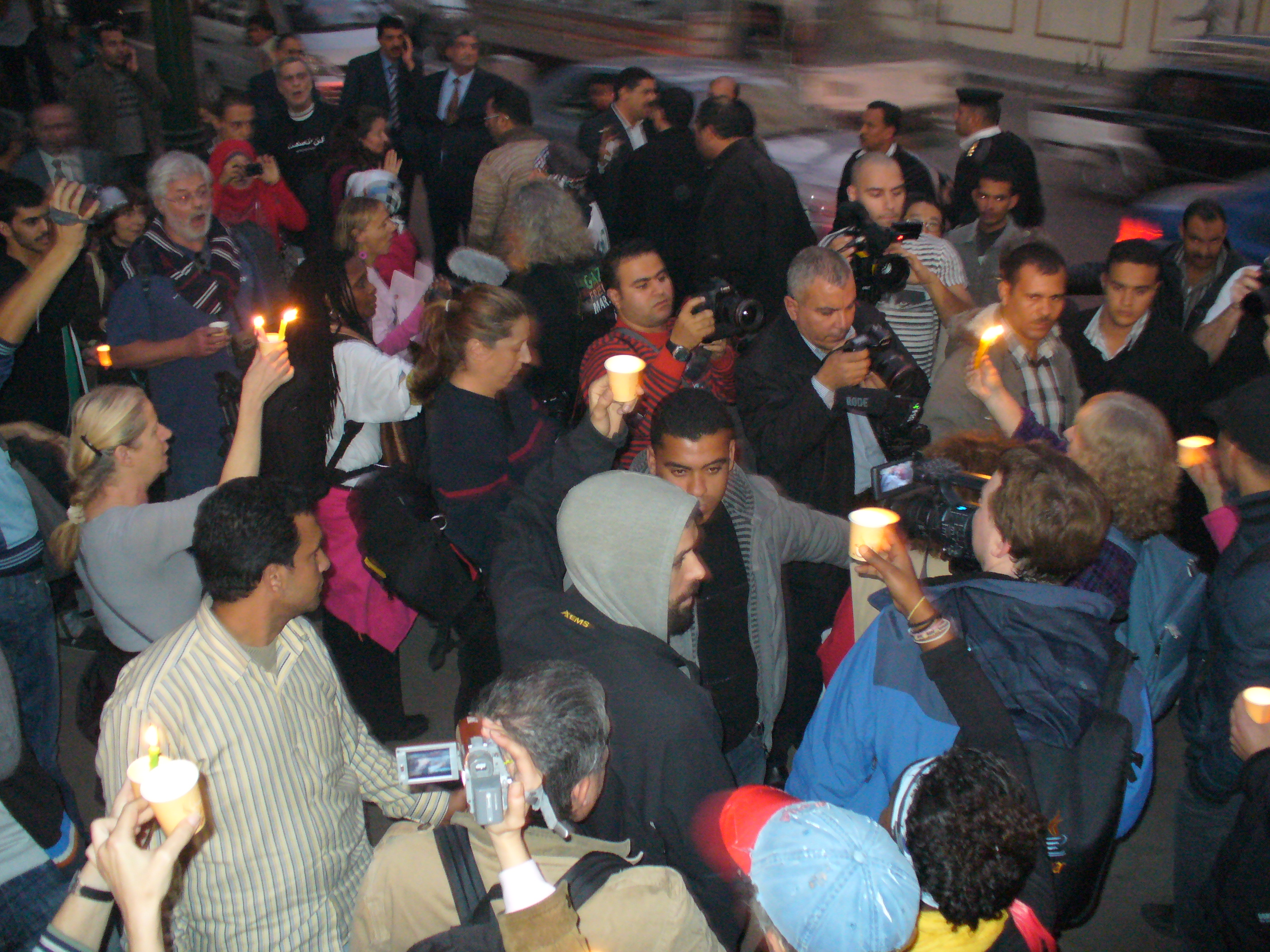Gail Chalbi, The Northern Light, 5 March 2010
In 2007 Bishop Dyck wrote about the wall being constructed by Israel on Palestinian land (“But Not So with You,” April 2, 2007). Being interested in the Israeli/Palestinian conflict, I asked what UMC was doing.
She directed me to the Palestine/Israel Justice Project Team, which I joined. That same summer the United Methodist Women’s School of Christian Missions highlighted the conflict. Resolution 6073 in The United Methodist Book of Resolutions 2008 expresses the church’s opposition to continued military occupation of the West Bank, Gaza, and East Jerusalem, and other ways in which human rights have been withheld from residents of Palestinian lands.
I decided to participate in the Gaza Freedom March in December 2009. Some 1400 peace activists from 42 countries, including eight Minnesotans, would meet in Cairo and go into Gaza to commemorate the beginning of the assault by Israel in December 2008 and protest the blockade begun in 2007. We would be marching alongside 50,000 Palestinians to the Eretz crossing, while 10,000 Israeli activists would approach from Israel.
However, we learned that Egypt had withdrawn permission to enter Gaza. The first morning we were there, we made cards and tied them to the Kasr al Nil Bridge in remembrance of the 1400 Palestinians—many of whom were women and children—killed during the assault. Soon the police asked us to leave the bridge and tore down the notes..
The morning we were scheduled to depart for Gaza police told the cab drivers that if they unloaded their occupants and luggage, their taxis would be confiscated. Later we went to the UN headquarters where our leaders spoke with a delegate. As we waited in the plaza we were surrounded by police and metal barriers for six hours. It was here that Hedy Epstein, an 85-year-old holocaust survivor, started a hunger strike. She found it incomprehensible that the Israeli government would put a stranglehold on people after what the Jews themselves had suffered during World War II.
Next we went to our embassies seeking diplomatic help to enter Gaza. We were again corralled for over five hours by Egyptian riot police, who informed us that we were being contained at the request of the embassy! Organizers then met with Egyptian first lady Suzanne Mubark. Eventually 86 activists went to Gaza for 48 hours, taking a message of solidarity and hope, along with much needed warm clothing and school supplies for the Palestinians.
Back in Cairo, several major demonstrations took place. On New Year’s Eve we gathered for a candlelight vigil near Tehrir Square where a number of Egyptian families joined us. An emotional moment was a cell phone call from Gaza thanking us for bringing international attention to their plight.
That afternoon for the first time ever a large contingency was allowed to demonstrate at the Israeli Embassy. As banners were displayed among people singing and chanting, passersby flashed the victory sign and took pictures. Our presence was front-page news in the Cairo papers and our experiences were written about and televised around the world. Suzanne Mubarak said we were like an earthquake in Cairo–we had done more good by protesting in Egypt than if we had all gone to Gaza.

